The Hottest Hit On The Planet:
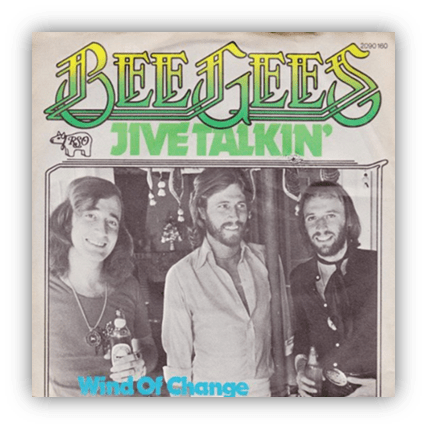
“Jive Talking”
by The Bee Gees
The Bee Gees have a lot in common with one of our featured artists from last week: The Beach Boys.
They both featured brothers, obviously. They both sang in falsetto. They both wrote pop classic after pop classic.
And similar to the way The Beach Boys were the surf-rock band who couldn’t surf, The Bee Gees were the disco group who never went to a disco!
Never? Maybe I should use words like “never.” Surely they must’ve popped into Studio 54 at least once?
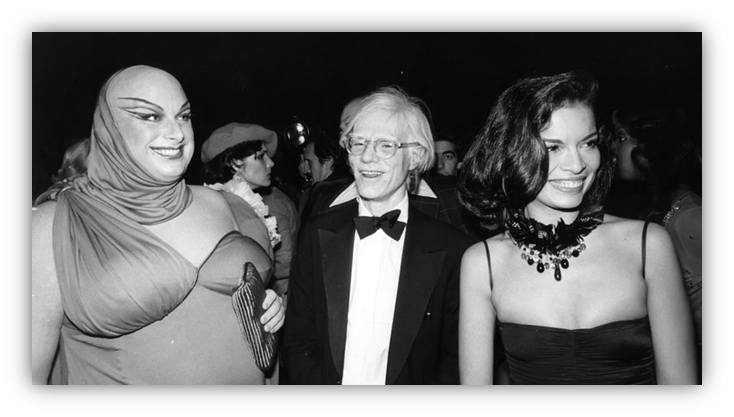
Just to see what the fuss was all about? Surely!
If not they’d have had to be the only famous people on the planet that never went!
But the Bee Gees seemed constantly confounded that their disco records were being described as disco records.
The Bee Gees claimed to not even know what disco was! The Bee Gees claimed to have not gotten the inspiration for the “Jive Tallkin’” groove by going to a disco, even though they were recording in Miami, where most of the big disco hits had so far come. The Bee Gees claim to have gotten their beat from a bridge.
It was the Julia Tuttle Causeway if you need to know, stretching from Miami Beach to the mainland.

The Bee Gees drove across the Julia Tuttle Causeway every morning on their way to the studio. There were seams in the bridge, where two blocks of cement – or something, I’m not an engineer – met, making regular rhythmical sounds as they zipped across.
Closely inspecting the bridge from the comfort of my Internet connection today, those seams still appear to be there.

If you live in Miami, and if you drove over the Julia Tuttle Causeway, and if you hit those seams at just the right speed, you could totally play the intro to “Jive Talkin’”!
Here’s Maurice:

“We kept on going across this bridge every day… that went chicka-chick-chick” every time we crossed it.
“One day Barry started humming “Jive Talkin’” in the back of the car and when we got home, we worked it all out.“
Thus, unlike virtually every other 70s act that would attempt a pivot to disco over the remainder of the decade, whether as a parody – a la Rod Stewart’s “Do Ya Think I’m Sexy?” – or in order to remain relevant – a la The Rolling Stones “Miss You” – the Bee Gees weren’t jumping on a band wagon. The Bee Gees were just being themselves.
Already the creators of a multitude of classics:
- “To Love Somebody”
- “I Started A Joke”
- “Massachusetts”,
- “New York Mining Disaster 1941”
- “Words”
- And my personal favourite: “Spicks & Specks”
…Enough classics that people were saying things like they were “the next Beatles” and not be joking, The Bee Gees managed to pull off a jarring yet hugely successful pivot into a second act.
In terms of leaving your old sound behind, concocting a completely new sound, and becoming bigger than ever before, the Bee Gees disco pivot may be the most successful in the entire History Of Pop.
And they did it more or less by accident. They did it because they were driving across a bridge. A bridge in Miami.
The Bee Gees were in Miami because Eric Clapton had told them about a house there.
At 461 Ocean Boulevard.
Just to make it easier for the boys to find it, he helpfully posed in front of it for his 1974 album 461 Ocean Boulevard, aka The One With “I Shot The Sheriff.”
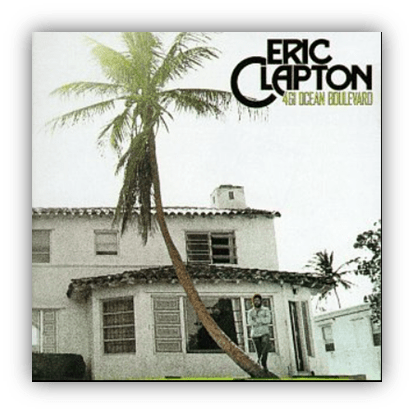
Thus it is Eric Clapton who was responsible for the biggest accidental disco act of the 70s. Who’d have thought?
The Bee Gees were in need of Eric Clapton’s real estate advice because they seemed to be stuck in a rut.
Nobody was calling them “the next Beatles” anymore, even though pop was desperately in need of “the next Beatles.” More worryingly, nobody was buying their records anymore.
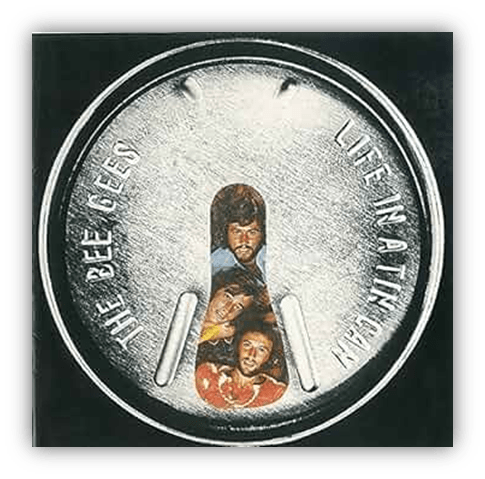
Their Life In A Tin Can album had resulted in precisely zero hits.
And the lead single from the album “A Kick in the Head Is Worth Eight in the Pants” was such a flop the record company decided not to bother releasing the album, much to the disappointment of fans of terrible album titles.
The Bee Gees weren’t certain what to do next. Fortunately their producer – Arif Mardin – had a couple of ideas.
Arif, a Turkish guy who had moved to America in 1958 after being granted a scholarship by Quincy Jones, was probably most famous at this point for producing Dusty Springfield’s “Son A Preacher Man”.
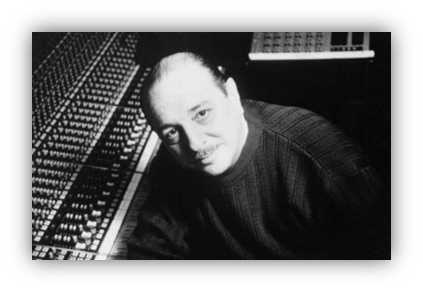
He’d also worked on a whole lot of Aretha Franklin hits.
More relevantly he’d produced Average White Band’s “Pick Up The Pieces”, a huge hit the year before, and the funkiest little disco hit ever recorded by a bunch of white dudes (“Pick Up The Pieces” is an 8,)
Arif knew all about disco. Equally importantly, Arif knew all about African-American slang.
Probably nothing emphasizes just how little the Bee Gees knew about disco than the story about how Barry was singing “Jive Talkin’” and had to be told by Arif what it meant.

Arif: “’Do you know what “Jive Talkin'” means?’
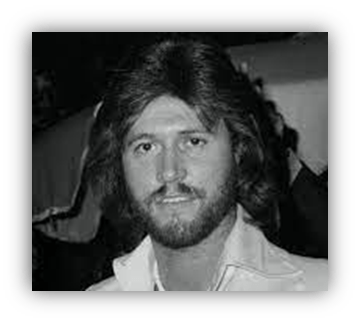
Barry: ‘Well yeah, it’s, ya know, you’re dancing.”

Arif: ‘No, it’s a Black expression for bullshitting.”
At which point Barry seems to have decided, “oh that’s a far better song topic” – after all, there can only be so many songs about dancing, a theory that the disco boom would very soon disprove – and re-wrote the whole thing accordingly.
That’s quite charming and all, but nothing is quite as charming as the synthesizer riff.
Or better still, the boys – mostly Barry, but you can hear Robin joining in too – singing along to the synthesizer riff:
“do be do be doo do de do de doo” etc.
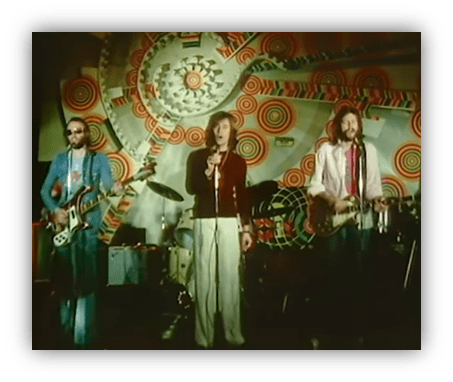
More bands should sing along to their synthesizer riffs. The Bee Gees had tapped into the sound of the future, but that “do be do be doo”-ing just makes it sound like they’re messing around with their new toys.
One of those synthesizers – for, as the video makes clear, there are two, one for the bass sounds and another for the futuristic zapping “do be do bedoos” – is a Minimoog:
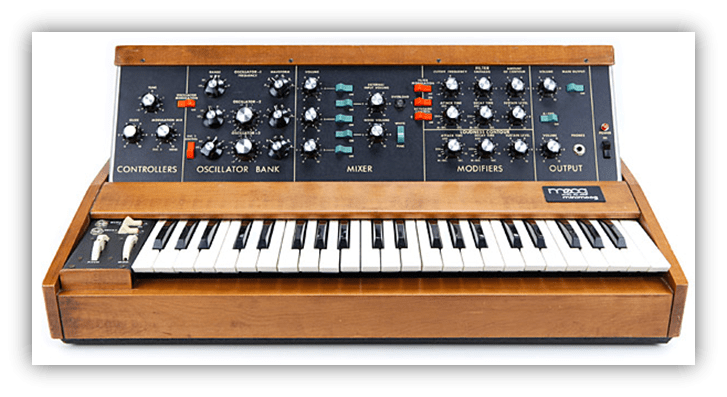
The portable instrument that took the synthesizer away from the world of mad scientists to the world of boys with their toys.
Minimoogs had been around for about half a decade at this point, but had mostly been used by serious prog-rock bands, even more serious free-jazz funk bands, and Kraftwerk… something to make their mind-warping compositions sound even more mind-warping. “Jive Talkin’” may be the first pop hit to utilize the MiniMoog simply because it sounded fun!
Now that they had stumbled upon disco, and zappy synthesizer sounds, there was only one piece missing in the Bee Gees armoury:
That was Barry’s falsetto.
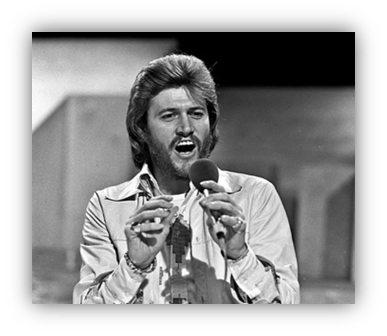
That would arrive a few months later during the final minute of “Nights On Broadway.”
Although the song itself is nothing special, that outro is quite something: Robin, the toothy one, sings most of the song, and he already has a fairy high voice, then Maurice comes in on top of that and he’s pretty squeaky, and you could be forgiven for thinking that’s about as high as they can go… but clearly you have underestimated Barry.
You should never underestimate Barry, and how high he can go.
With Barry’s falsetto as their secret weapon, the Bee Gees dominance of the rest of the decade was virtually assured.
“Jive Talkin’” is an 8.
Meanwhile, in Prog-Rock Land…
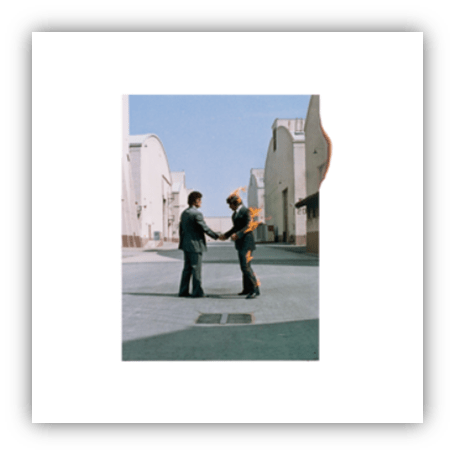
It’s “Wish You Were Here”
by Pink Floyd
Pink Floyd never should have dumped Syd Barrett.
I know he was off in his own little acid-fried world.
I know he was impossible to work with, or probably even to be around.
But he was a character.
Rock’n’roll needs characters.
Otherwise, what would I write about?
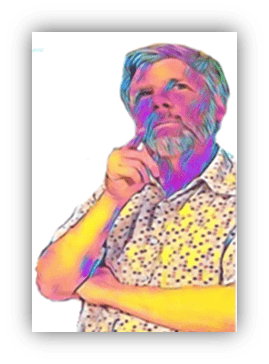
Syd Barrett – the poster boy for Rock Stars Who Lost Their Marbles – was different from the rest of Pink Floyd.
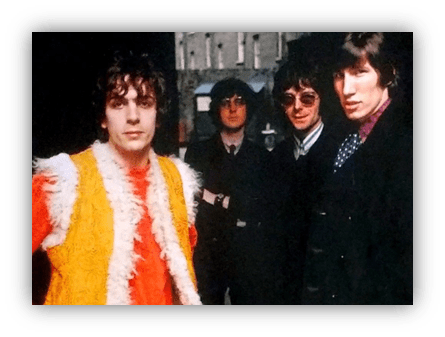
Without him, Pink Floyd were simply not all that interesting. Sure, they made interesting records with interesting sound effects, such as “Several Species of Small Furry Animals Gathered Together in a Cave and Grooving with a Pict”
They made interesting album covers.

Such as the one that was just a cow, and yet somehow became their first UK Number One album!
But Roger Waters and David Gilmour and the other two… they weren’t compelling characters.
Although they liked to fill their records with little jokes – the whole “if you don’t eat your meat ya can’t ‘ave any puddin’” thing for example, or the line about buying a football team in “Money” – they did not come across as a barrel of laughs.
Nobody in 1975 was describing Pink Floyd as a “fun band.”
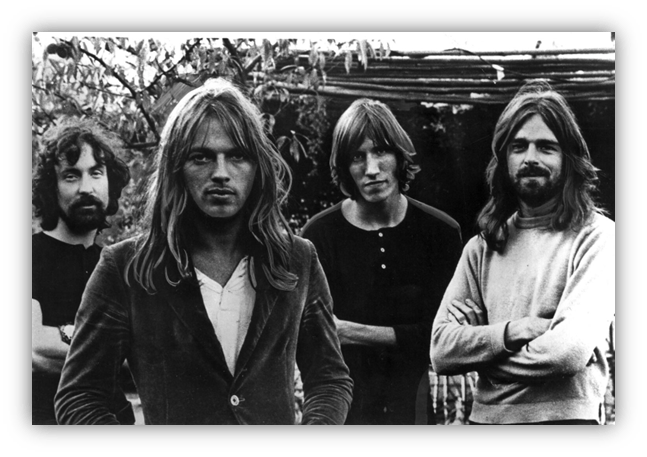
When Syd was in charge though, Pink Floyd had been fun!
They had songs like “See Emily Play” in which Syd sings about Emily losing her mind. And then he lost his mind. That’s some expert foreshadowing!
Or maybe it wasn’t foreshadowing at all, maybe Syd was already losing his mind. It certainly happened early on, whilst “See Emily Play” was still in the charts. It’s difficult to know exactly what happened, and when, since pretty much everybody involved was also tripping balls, but there are legends about Syd spiking his coffee with acid each morning so that he’d be permanently tripping in genius-mode. Turns out that you can’t do that for long periods of time. It’s discombobulating.
Syd didn’t know where he was half the time.
He could no longer tell a green field from a cold steel rail. Roger Waters likes to tell a story about the time he and Syd were walking down the street in Los Angeles and Syd says “it’s quite nice here in Las Vegas isn’t it?” Maybe Syd was crazy, or maybe he was just bad at geography.

I’ve been on holiday with guys who had no idea what country they were in, and they weren’t insane or on drugs. They were just bad at geography.
There’s also a story about the band stopping at a roadside eatery and Syd ordering 12 sandwiches, before cramming them all into his mouth. This also feels like foreshadowing of what would happen later.
Pretty soon Syd had gotten himself into a state where he’d spend most of his time just staring off into space.
That includes whenever he was onstage:
Where he’d just stand there, strumming the same chord all night long.
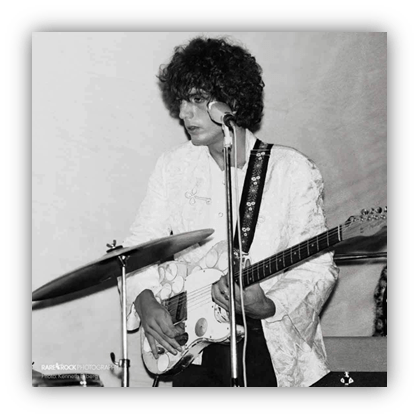
Legend has it that Syd didn’t even bother to move his lips on “American Bandstand”, just staring blankly ahead into the camera. That’s not quite true, although he
- (a) definitely couldn’t be bothered with even a halfway convincing mime and
- (b) appears to be freaking Dick Clark out.
Pink Floyd also played on the Pat Boone Show and the Perry Como Show during that tour, and seriously, who thought any of this was a good idea?
It seems to have taken a long time for the rest of Pink Floyd to officially dump Syd from the band. First, they simply wouldn’t pick him up on the way to gigs. Sample band conversation on the way to a gig:
“Shall we pick up Syd?”
“Let’s not bother”
Then they wouldn’t let him into the studio. Then he’d turn up at gigs and just stand there, staring at David Gilmour with hatred in his eyes.
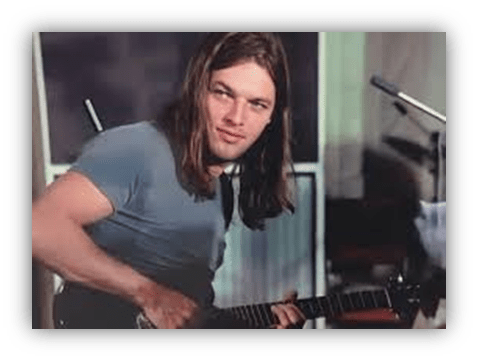
David had just recently joined the band to help out on those occasions when Syd was off with the fairies.
Since that was pretty much all the time, David soon became a permanent member.
David may have started playing in Pink Floyd just as Syd was dropping out, but they went back a long way.
They’d been school chums together. They’d holidayed in St Tropez together, until they got arrested for busking. When David took Syd’s place in the band, first just on guitar, but then gradually on vocals, it was awkward. Over half a decade later the band was still feeling bad about it.
“Wish You Were Here” was their way of apologizing to Syd.
A lot of people should have apologized to Syd. There are rumours about fans locking Syd up in a closet whilst he was having a bad trip, just for the lols. Mind you, Syd also locked his girlfriend up for three days, pushing cookies under the door to feed her, and hit her over the head with a mandolin.
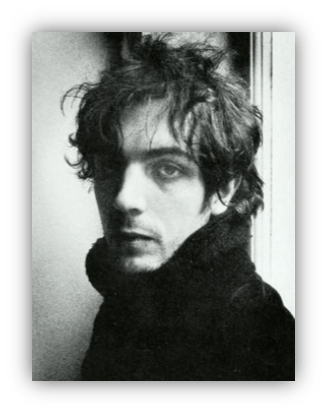
So let’s not feel too sympathetic for him.
So Syd was out of the band, and things were looking grim.
It appears as though nobody thought Pink Floyd could continue to function without its most dysfunctional member. All eyes turned to Roger Waters, and they weren’t overly impressed with what they saw.
Compared to Syd with his thick eyeliner and his bouffant hair, Roger Waters’ most distinctive feature was that he looked vaguely like horse.
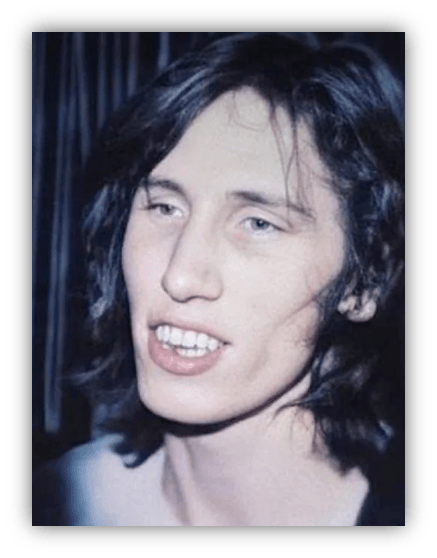
It says a lot that, when faced with the choice between a mad genius going increasingly off the rails, and the rest of the band, Pink Floyd’s management decided to drop the band and throw their lot in with Syd. Nobody thought that Roger Waters could possibly make it as either a rock star or as a hit song writer. I guess he showed them.
It took a few albums, but Pink Floyd finally figured out that the best strategy was to make immaculate sounding epics with lots of special effects, and lyrics that commented on the human condition.
They continued to smother their records with Britishicisms, switching Syd’s “Wind In The Willows” whimsy for the nightmare fuel of an English boarding school.
And they made “Dark Side Of The Moon” which ought to have proven all the haters wrong.
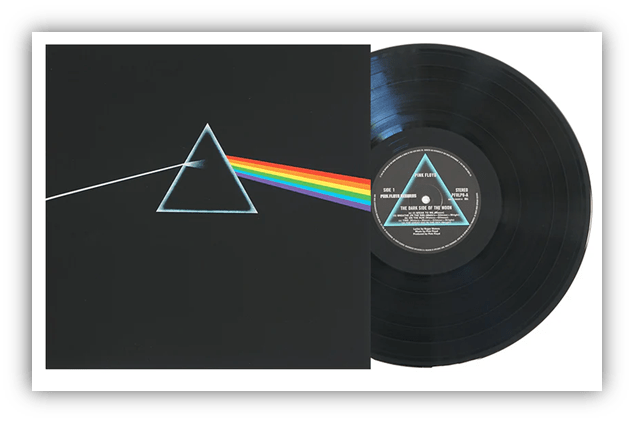
They were the biggest band in the world – give or take an Eagles and a Queen or two – but deep inside, they knew that people still thought of them as the band that Syd Barrett used to be in. Given that by this point Syd was doing nothing more creative than pottering about his cottage in Cambridge, this had got to hurt. It was time to address the elephant in the room. It was time to sing about Syd. Time to write a concept album about Syd.
Well, sort of.
Roger insists that the “Wish You Were Here” album is about the corrupt nature of the music industry, hence the cover with the shady looking businessmen, one of whom is on fire. But who are they kidding? Pink Floyd spent months on these tracks. Months of thinking about Syd. Writing about Syd. Singing about Syd.
They pondered ponderous questions such as, “did they get you to trade, your heroes for ghosts?” and “did you exchange a walk-on part in the war for a lead role in a cage?” They likened their predicament – or maybe Syd’s – to being “two lost souls swimming in a fishbowl.” Presumedly that’s a reference to the famed short attention span of goldfish, or maybe it was just a wacky rhyme. But every Pink Floyd lyric – usually written by Roger, often, as in this case, sung by David – is designed to create the impression that they are Big Thinkers of Big Thoughts. So that thing about “two lost souls swimming in a fishbowl” simply must be a profound observation about the human condition.
If the Floyd boys felt awkward spending months thinking, writing and singing about Syd, things got all the more awkward when Syd simply wandered into the studio one day. They sang about Syd, and he materialized. They wished he was there, and then he was. And then, almost instantly, they kind of wished he wasn’t again. He kind of freaked them out. For the longest time, he was just there, and everyone ignored him. Nobody knew who he as.
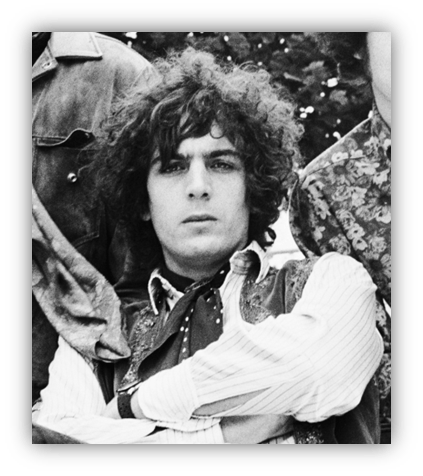
They didn’t recognise him. They remembered a guy who looked like this:
Instead, what they saw in front of them, just lurking around the studio, was a guy who looked like this:
A man who, as Roger diplomatically put it, was a “great, fat, bald, mad person.”
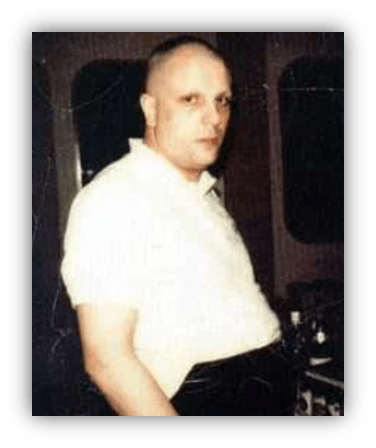
Well, the latter shouldn’t have been a surprise. There was a look in his eyes, like black holes in the sky. He also appeared to have shaved off his eyebrows.
Syd said he was there to “do (his) bit.” They didn’t give him anything to do so he spent at least some of the time in the studio just brushing his teeth. At some point somebody asked him how he put on so much weight: “I’ve got a very large fridge in the kitchen and I’ve been eating a lot of pork chops.”
Now, they weren’t working on “Wish You Were Here” when Syd just wandered in.
They were working on another definitely-about-Syd-song, “Shine On You Crazy Diamond.”
Since “Shine On You Crazy Diamond” is a song of nine parts – five at the beginning of the album, another four at the end – I’m not sure which part they were working on, but it was probably one of those bits where David plays blues guitar over an ambient soundscape.
Roger asked Syd what he thought about the song, a song which – do I need to remind you? – was about himself.
Syd appears to have shrugged and muttered “sounds a bit old.”
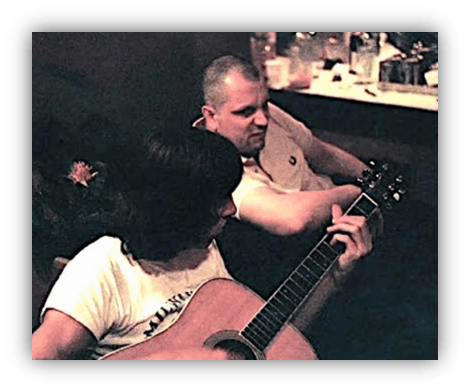
Syd didn’t appear to be moved by the lyrics about him being a legend, a martyr, a raver, a seer of visions, etc. He didn’t appear to be moved by the epic chorus. He didn’t seem to be aware that the song was about him. He was in that studio, listening to that song for at least one day, possibly two or three – nobody seems to be sure how long he was there – and he never figured it out.
“Wish You Were Here” is one of those cases where the back story is far, far more interesting than the actual song.
David’s opening guitar melody is pretty of course; recorded to sound as though it were coming out of a car radio, after twisting the dial in order to find a radio station that was playing it.
This, once again, demonstrates an uncanny capacity for foreshadowing, predicting a reality in which “Wish You Were Here” would come out of thousands, maybe millions, of car radios for years, decades, to come.

A reality in which you can always find a radio station playing “Wish You Were Here.” You usually don’t even need to turn your radio dial very far.
“Wish You Were Here” is a melodic and expensive sounding power ballad with a number of quotable lines, but precisely none of the weirdness that unpinned the whole point of Pink Floyd. I doubt very much if Syd would have approved. He’d probably have thought it sounded old.
“Wish You Were Here” is a 7.
Meanwhile, in Runaway American Dream Land…
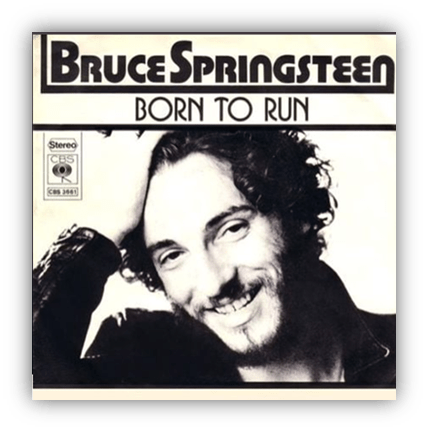
It’s “Born To Run”
by Bruce Springsteen & The E-Street Band
The official soundtrack to the American Dream.
The working class hero who made rock’n’roll sound like hard work – that’s the satisfying kind of hard work that leaves you covered in sweat, the kind of hard work that means you don’t need to go to the gym after – and the creator of the 70s ultimate mondegreen: “CRAMPS MY GUT!!!!”
Born of a bus driver and a legal secretary, Bruce’s working-class hero credentials were flawless. So were his all-American credentials.
Bruce’s father’s side of the family were so American they fought in the American Revolution.
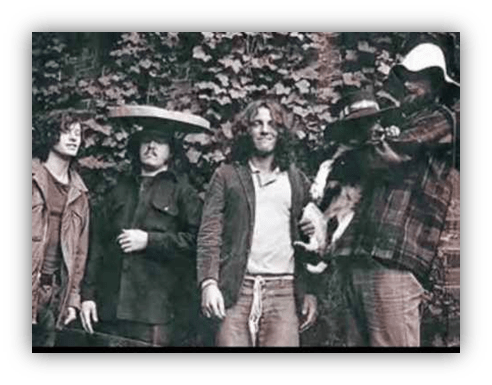
And Bruce was so working class that one of his early bands was called Steel Mill.
Mind you, another one was called Dr. Zoom & the Sonic Boom, so maybe we shouldn’t read too much into band names.
Bruce was working up a sweat as part of the Asbury Park Circuit scene:
A scene which appeared to attract uniquely terrible band names such as Funky Dusty & The Soul Broom. It also attracted thousands of hot-rod street racers, and even greater numbers of youngsters just generally looking for a good time.
Every weekend they descended in their cars onto the same couple of blocks:
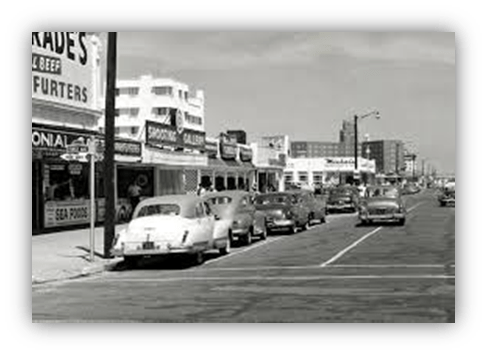
Up Ocean Avenue, chuck a left on 7th Avenue, then down Kingsley Avenue…
And thousands upon thousands of cars, doing loops of those blocks all night long.
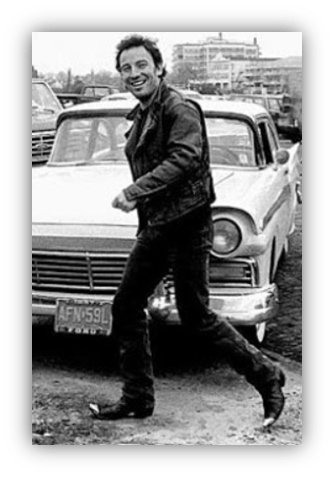
Somebody called it a city on wheels.
There were also 50 bars with live bands for you to watch, presuming that you could find a place to park.
The leader of this scene, before Bruce became “The Boss”, was Southside Johnny and The Asbury Jukes. They didn’t release a record until after Bruce became famous – and the ones they did didn’t exactly become hits – but they definitely sound like a New Jersey bar band.
Southside Johnny and The Asbury Jukes didn’t really have to release a record, and not only because they were already every Asbury Park hoon’s favourite band.
Pretty much every member of The Asbury Jukes ended up in Bruce Springsteen’s E-Street Band anyway.
That includes everyone’s favourite saxophonist Clarence Clemons who joined the band one day, by bursting through the door of the club in which Bruce was playing.
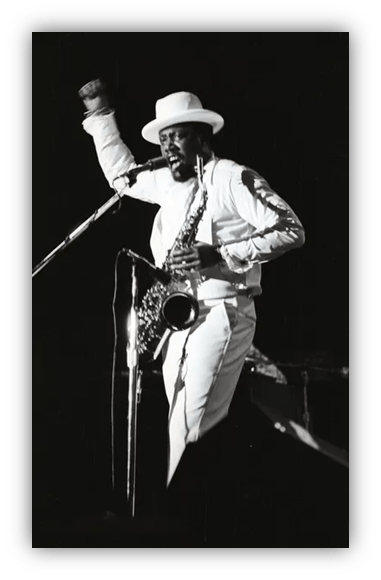
By some purely coincidental force of nature, the wind was so strong right at that moment that it ripped the door right out of Clarence’s hand, blowing it right down the street. Clarence stepped through the hole where the door had recently been, turned towards Bruce, and made an announcement: “I want to join your band!”
To which Bruce, having just witnessed such an entrance, could only chuckle: “You can do whatever you want.”
There were a lot of places like The Circuit, all over the Western World, but The Circuit of Asbury Park, New Jersey, was different.
This is the world in which “Born To Run” is set.
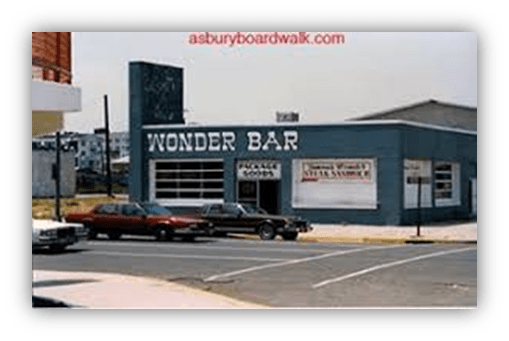
A veritable Shangri-La to a teenager, but you probably shouldn’t stay there too long. If you have any dreams at all for a better life, you need to get out.
Bruce knew all about getting out. He’d already gotten out of one dead-end town. His own.
“In the day we sweat it out on the streets of a runaway American dream
At night we ride through mansions of glory in suicide machines
Sprung from cages on Highway 9”…
Highway 9 being the highway coming out of Freehold, the small town in which Big Bruce grew up.
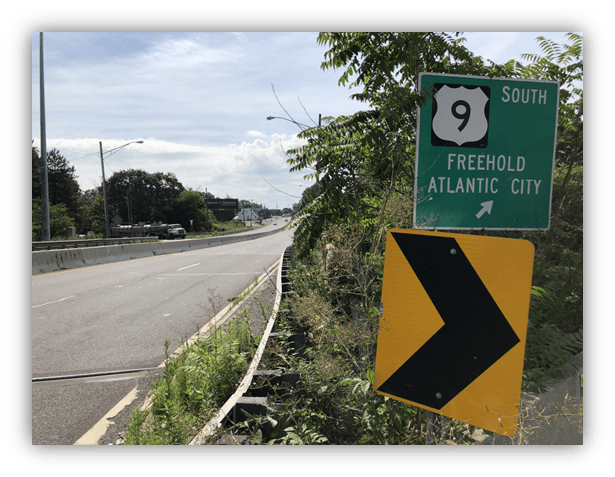
Highway 9 goes straight up to New York in one direction, down to Atlantic City in the other… it bypasses Asbury Park, but that’s not important.
Bruce had been out of Freehold for years by this point, he had gotten out while he was young… Why?
“Baby this town rips the bones from your back
It’s a death trap, it’s a suicide rap”
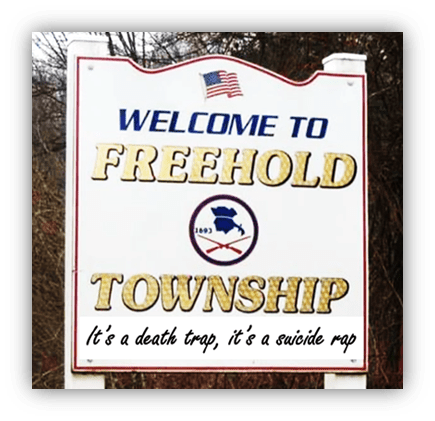
They should put that on their welcome sign.
Bruce had good reason for having escape on his mind.
He was in the midst of a struggle against the odds. The chips were down. The stakes had never been higher. Bruce’s first two albums had been flops, and he was about to be dropped. He was called into the record company offices and informed that if his next album was not a smash, he was out of there!

Write a hit. Or don’t bother coming back.
If Bruce hadn’t delivered a hit, he’d have to go straight back to Asbury Park, back to playing bars on The Circuit, back to playing to dead-end hot-rod racing kids. He made one of those dead-end hot-rod racing kids his protagonist. A dead-end hot-rod racing kid who was horny for a girl named Wendy.
“Just wrap your legs ’round these velvet rims
and strap your hands across my engines”
Are we still talking about cars?
This dead-end hot-rod racing kid wasn’t just horny, he also had aspirations.
“someday girl, I don’t know when
We’re gonna get to that place
Where we really want to go, and we’ll walk in the sun
But ’til then, tramps like us
Baby, we were BOORRRRN TO RRRUUUNNNN!!!!!!”
Bruce likes to talk about how he loved the phrase “born to run” because it sounded cinematic.
Bruce also likes to talk about how “Born To Run” sounds like “Roy Orbison singing Bob Dylan, produced by Spector” but I’d like to add another:
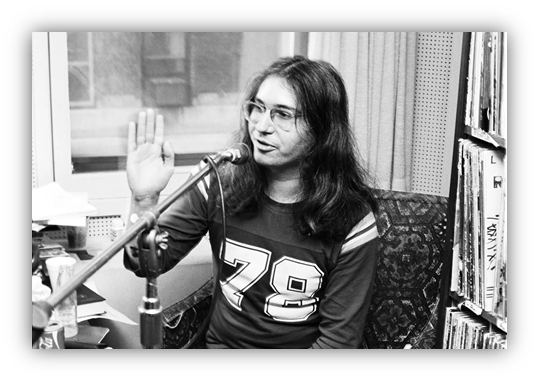
“… under supervision by Jim Steinman.”
“Born To Run” feels like a rock’n’roll teenage death song where the lovelorn teenagers have grown up and found themselves on the economic trash heap. “Born To Run” is rock’n’roll for kids who realize that they have just one shot to get out. Bruce knew he had one shot to get out. “Born To Run” was that shot. It was his last chance power drive.
Bruce threw everything he had into it. He worked on it for months. He probably worked on it longer than Pink Floyd worked on “Wish You Were Here.” But whilst Pink Floyd used that time and money to scrub from “Wish You Were Here” anything that might be mistaken for personality, “Born To Run” bristles with life.
Bruce battles his way through “Born To Run” as though he’s Rocky Balboa boxing Apollo Creed – although Rocky wouldn’t be out until the next year – each life-affirming grunt hitting like a punch … now, That’s Cinematic!
“Born To Run” got a lot of important people excited.
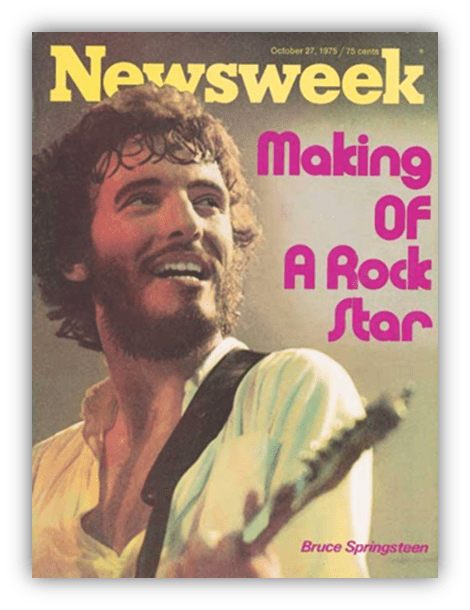
Enough important people to get on the cover of Newsweek.
And on the cover of Time magazine the very same week, grinning like a maniac.
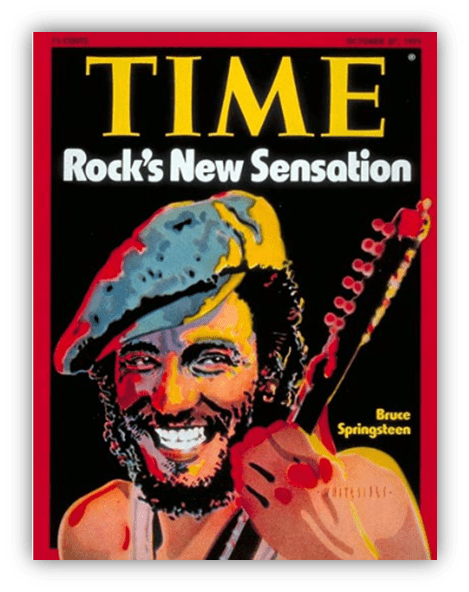
Neither of these are exactly what you’d call rock magazines. The Newsweek article is mostly made up of Bruce saying he’s sick and cynical about the hype that has built up around him, the kind of hype that gets you on the cover of Time and Newsweek in the same week.
The extent of the hype – and the fact that Columbia budgeted a quarter of a million dollars for the hype – became part of the hype, which in turn created more hype. An ironic situation for an artist whose main selling point had always been, and always would be, his authenticity.
People got particularly overexcited in New Jersey.
Only a few years later the New Jersey State Assembly passed a resolution to turn “Born To Run” into the “unofficial rock theme of our State’s youth.”
Ultimately however it got voted down in the Senate after somebody listened to the lyrics, and realized that the song was about leaving New Jersey, not a notion they were particularly inclined to endorse. There was also the small issue that Bruce uses the word “suicide” twice in the opening verse. Again, not something they felt comfortable in endorsing.
But you can understand the excitement.
Rock’n’roll in the mid-70s was in desperate need of a hero. Not only that, but America in the mid-70s – post-Watergate, post-Vietnam – was in desperate need of a hero. Bruce Springsteen looked like a working-class hero.
And with “Born To Run”, now he sounded like one.
“Born To Run” is a 10!
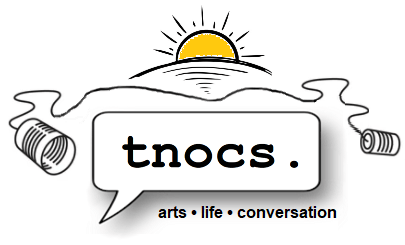


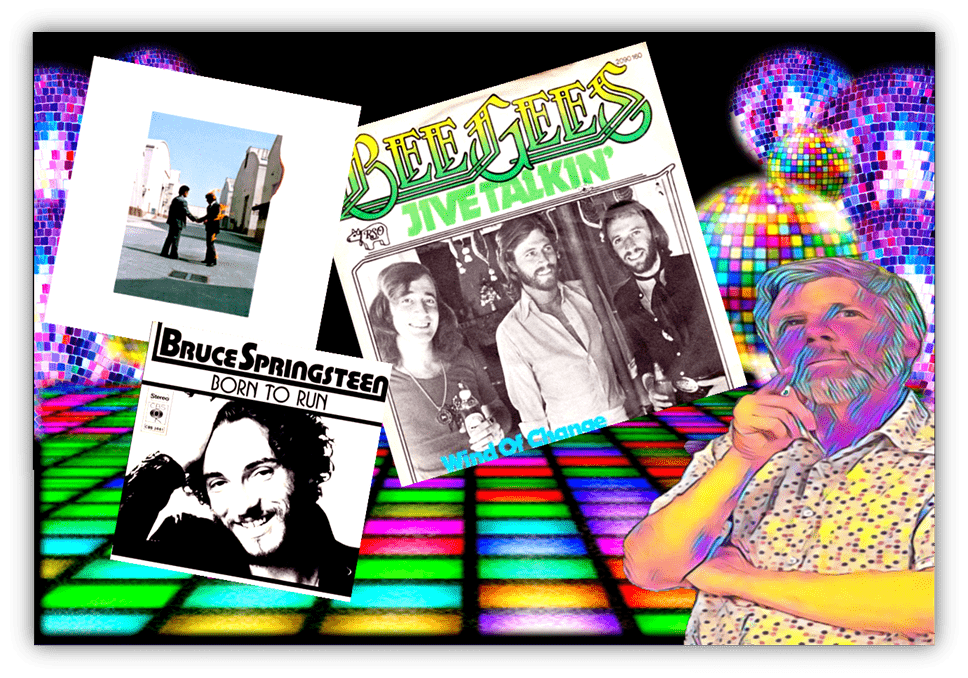
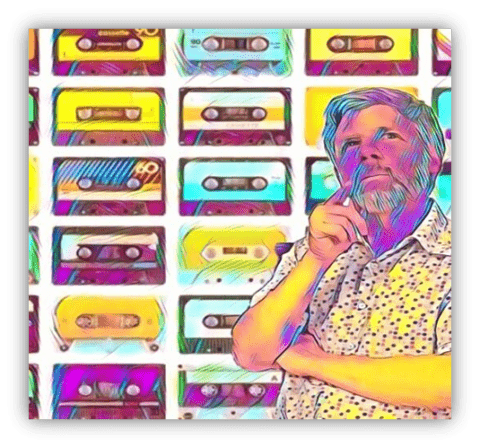

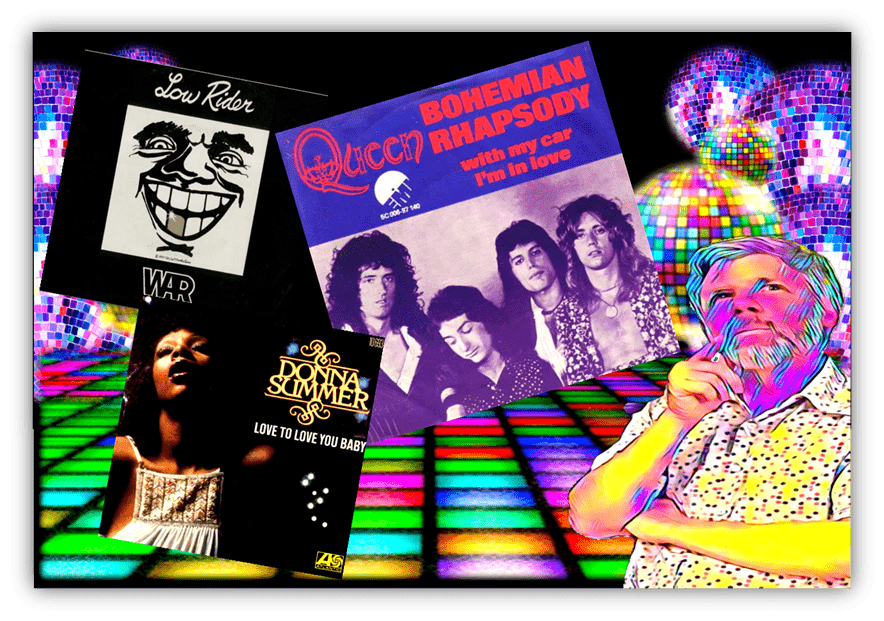


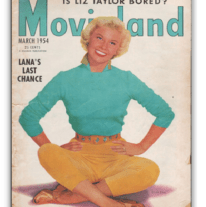

Presenting the official It’s The Hits Of August 1975 Playlist! From “Jive Talkin'” to “Kung Fu Fighting”… from KC & The Sunshine Band, to The O’Jays, to The Jackson 5, and the Bee Gees of course… it’s the funkiest disco hits from the early pre-“Saturday Night Fever” Era!
https://open.spotify.com/playlist/61qameuZvjliMw9al2Yk95?si=120f4d331b164985
I could happily listen to that playlist any day.
OK, first of all “Pick Up the Pieces” is a 10, amirite, rollerboogie?
“Jive Talkin'” is such a fun, light-hearted Bee Gees hit. It’s a 9 or 10 for me. That synth line is the best.
I never know what to do with “Born to Run”. I mean I like it, but I don’t seek it out. I recognize the genius and craft without wanting to hear it all the time. 7 I guess?
The biggest surprise is the lack of a rubber-stamp 10 for “Wish You Were Here”. It’s just one of those songs that seems to have been put on an untouchable pedestal. Like, we don’t even question that it’s a 10. But I agree with you, the backstory is more interesting than the song. It’s boring enough that I’d go with a 6. It’s an automatic dial turner for me.
Me, too. I feel that way about most of Pink Floyd’s output actually. Pretentious. Arty. Not for me.
I mean, I like some Pink Floyd…mainly Dark Side…. But I don’t like this Pink Floyd for sure. Definitely pretentious. But here and there there’s some good stuff.
I don’t like Pink Floyd. Never have, never will.
Yes, Pick Up the Pieces is a 10. You know it, I know it, everyone should know it.
On the country side of the tracks, Stella Parton was enjoying one of her biggest hits. Yes, She’s Dolly’s younger sister.
https://www.youtube.com/watch?v=ZtoqWWj9qak
Same holy moly reaction when I learned that James Taylor had a singing sister, Kate. And that Kate Taylor was the first person to sing what would become the Gilmore Girls theme song.
When I was in college, nobody ever brought up the third Bronte sister, Anne. I couldn’t believe it. I learned about Anne Bronte through a mothership meme. I thought, maybe, she was some hack. No way. Agnes Grey kicks ass.
If you’re out on the road… 🎵
All three of these are acts that it took me a while to come round to. As a child of the 80s the Bee Gees were a naff relic (naff = unfashionable in a cheesy kind of way). Pink Floyd were dull and serious, seriously dull if you will. Bruce was overly bombastic and completely unrelatable to my rural northern England upbringing.
I got the hang of Pink Floyd by the early 90s and Bee Gees and Bruce followed in subsequent decades. Shine On You Crazy Diamond is what got me hooked but Wish You Were Here is on a par with it.
I do love the Sparklehorse version with a mewling Thom Yorke adding atmospherics. May not be to everyone’s taste with its lo-fi quality and really slowing down an already ponderous track.
PF = 10
BG = 8
BS = 9
https://youtu.be/kSbuixO2mYA?feature=shared
Mewling Thom Yorke is my favorite Thom Yorke.
Fun fact: The first three syllables of Jive Talking aren’t “Juh juh juh” like a stuttering beginning to the word “jive” as many people assume, but rather “It’s just your” instead. The confusion was so strong that Casey Kasem had to apologize on American Top 40 when the show claimed initially that was a hit that had stuttering in its lyrics.
The memory is a funny thing. Don’t ask me what I had for breakfast yesterday; I couldn’t tell you.
But I remember hearing Casey explaining the Jive Talking thing like it was yesterday.
What a great time to be a teenager! I do have one caveat. “Wrapped up like a douche” has to be the 70’s ultimate mondegreen.
😂